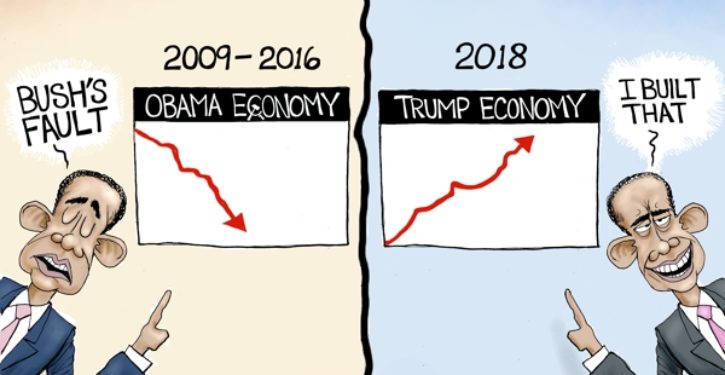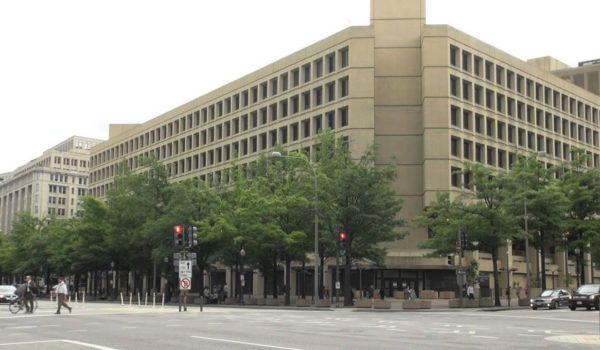
The Washington Post reports that American workers are now seeing the fastest wage growth in a decade, outpacing inflation. It must have pained The Post to report that, because it is a staunchly liberal newspaper that has not endorsed a Republican for president since 1952.
As the Wall Street Journal observes in “The American Wage Boom,”
Compensation for U.S. workers grew at an accelerating rate in the third quarter, a sign a historically tight labor market is yielding better pay for employees…
The increase was led by improving pay for private-sector workers. Wages and salaries, which account for about 70% of total compensation, rose 3.1% from a year earlier for private-sector workers. That was the strongest year-over-year gain since the second quarter of 2008.
Total compensation for those workers increased 0.8% on the quarter and 2.9% from a year earlier. … Worker compensation is now rising at a faster pace than prices. The consumer-price index rose 2.3% from a year earlier in September, the Labor Department said.
During the Obama administration, the economy barely grew, rising at an average annual rate of less than 2%. As economists such as Mark J. Perry noted, “During Obama’s time in office, America … slipped in several international rankings of competitiveness, innovation and economic freedom.”
Will this presidential election be the most important in American history?
Under the Trump administration, things have improved. As Perry, an economics professor at the University of Michigan, points out, median household income in the U.S. is now at an all-time high, although certain regions in the U.S. have lagged behind.
America’s economy grew by a solid 3.5% rate in the third quarter of 2018: “For the first time in more than three years, the US economy grew at an annualized rate of 3% in GDP in two successive quarters. The third quarter expansion measured 3.5% following Q2’s 4.2%,” wrote Hot Air’s Ed Morrissey. As the Associated Press noted, “The result was slightly higher than many economists had been projecting. It was certain to be cited by President Donald Trump as evidence his economic policies are working.” Unemployment recently fell to the lowest level since 1969.
The Trump administration has helped fuel economic growth by bringing an end to the wave of unnecessarily complicated and burdensome red tape issued by the Obama administration. Red tape from different federal agencies sometimes sent contradictory signals to businesses, confusing them and making them reluctant to hire people.
Trump has pruned unnecessary regulations more vigorously than any president since Ronald Reagan. Over “1,500 Obama rules in the pipeline but not finalized were withdrawn or delayed.” CEI’s Wayne Crews says this focus on “cutting red tape is exceptionally good news for consumers, businesses and the economy.” In recent years, “the U.S. federal regulatory burden has amounted to nearly $2 trillion annually. This amounts to a hidden tax of nearly $15,000 per household in a given year.”
The Trump administration needs to continue eliminating burdensome and counterproductive agency regulations. As Crews notes, pruning more regulations “would jumpstart the economy, finally resulting in the economic relief Americans have been waiting for: more jobs and higher wages. It would also help small business owners, driving more growth, investment, and productivity.”
Trump also needs to appoint more judges who are willing to allow agencies to delay or swiftly repeal harmful regulations. Liberal judges appointed by Obama and Clinton have issued more than a dozen rulings blocking agency delays of Obama-era regulations issued in 2017. Conservative judges have been more willing to uphold these delays or repeals of Obama-era rules. But a Democratic-controlled Senate is expected to block the appointment of any additional conservative judges to the Supreme Court and the federal appeals courts. Indeed, a liberal Senate might even block the appointment of moderate judges who fail to meet liberal litmus tests laid down by special interest groups and left-leaning trial lawyers; Senate Democrats have voted in unison against even some moderates nominated by Trump. Such a blockade by a liberal Senate would leave the courts in many parts of the country in the hands of liberal judges who are hostile to deregulation.
A future Congress may also impose burdens on the economy through new unfunded mandates. “Democratic Socialism,” favored by some incoming Democratic lawmakers, has a huge price tag, in terms of lost jobs, rising unemployment, and increased budget deficits. Yet this left-wing ideology has spread widely within the Democratic Party: According to a Gallup survey, 57% of Democrats have a positive view of socialism. The progressive web site Vox admits that the price tag of Democratic Socialist Alexandria Ocasio-Cortez’s proposals is $42 trillion. That would leave America with the world’s highest debt ratio compared to its economy. America would have far more debt than bankrupt countries such as Greece that defaulted on their obligations to creditors and had to be bailed out by international bodies. America is simply too big to be bailed out by any international body like the IMF. Yet, former President Barack Obama recently touted Ocasio-Cortez, a sign that her costly proposals may now be viewed as being in the party’s mainstream by Democratic leaders.




